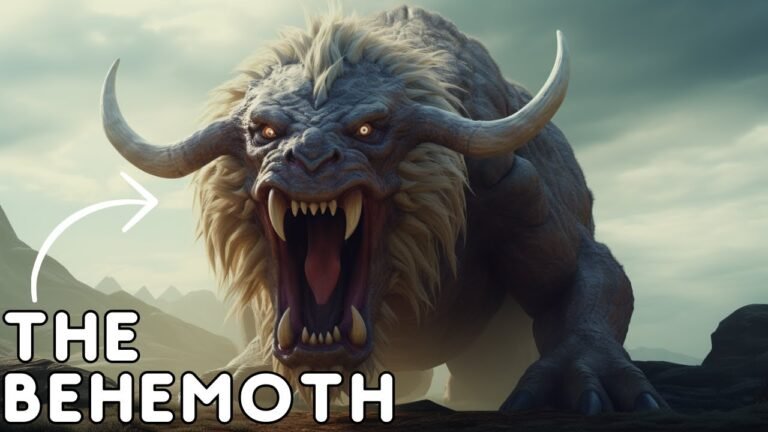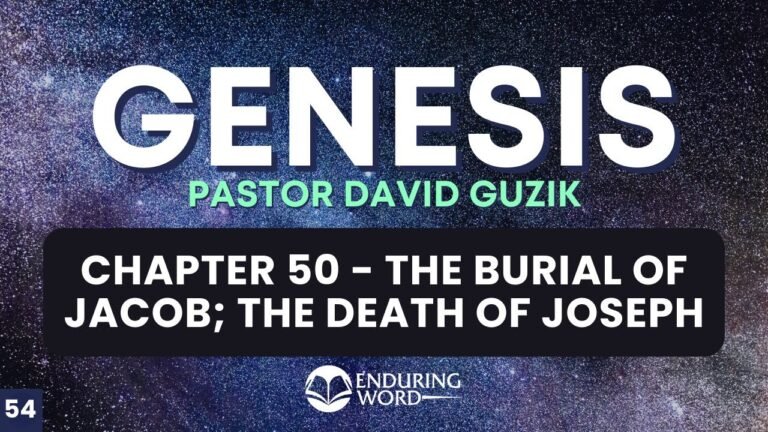Understanding the Behemoth in Biblical Context
In the realm of biblical literature, the term behemoth evokes images of immense power and mystery. Mentioned in the Book of Job, this enigmatic creature has sparked intrigue and debate among scholars and theologians alike. Often interpreted as a symbol of God’s creation, the behemoth represents both the majesty of nature and the limits of human understanding. As we delve into its significance within the biblical narrative, we uncover not only its literal implications but also its metaphorical resonance in discussions of faith, creation, and the divine.
Which animal is referred to as the behemoth in the Bible?
In the rich tapestry of biblical imagery, the behemoth is often interpreted as a formidable creature, most commonly associated with the hippopotamus. This connection is particularly evident in languages like Russian, where “begemot” primarily refers to the hippo rather than the biblical entity itself. However, the behemoth’s identity isn’t limited to just one species; the elephant and water buffalo also emerge as potential contenders, each embodying the essence of strength and majesty attributed to this enigmatic beast. This multifaceted interpretation highlights the behemoth’s enduring presence in both ancient texts and the natural world.
What is God’s perspective on behemoth?
In the vivid imagery of scripture, Behemoth is depicted as a colossal creature, crafted by God with the same care as humanity. This majestic being, grazing on grass like an ox, exudes immense strength, evident in its powerful loins and robust muscles. Its formidable tail stands rigid, reminiscent of the sturdy cedar, while its bones resemble tubes of bronze, symbolizing unyielding strength. The description not only highlights the grandeur of Behemoth but also reflects the might and creativity of its Creator, inviting awe and reverence for the wonders of the natural world.
What are Behemoth and Leviathan?
Behemoth and Leviathan are two legendary creatures often referenced in ancient texts, particularly in the Book of Job. Behemoth is frequently interpreted as a hippopotamus, depicted as a powerful beast dwelling among the lush lotus plants of the river. Its immense size and strength evoke a sense of awe and fear, highlighting its role as a symbol of nature’s might.
Conversely, Leviathan is often associated with a crocodile, representing a formidable presence in the waters. This creature is characterized by its ferocity and dominance, reinforcing the idea that both Behemoth and Leviathan embody the untamed forces of the natural world. Together, these creatures reflect humanity’s reverence and apprehension towards the wild, untouchable elements of creation.
Unraveling the Mysteries of the Behemoth
The Behemoth, a creature steeped in myth and legend, captivates the imagination with its colossal size and formidable presence. Often depicted as a land-dwelling giant in ancient texts, it symbolizes untamed nature and the raw power of the earth. Scholars and enthusiasts alike have delved into various interpretations, linking the Behemoth to everything from ancient biblical references to modern-day environmental concerns. As we explore its origins, we uncover a tapestry woven from cultural beliefs, scientific inquiry, and the human desire to understand the unknown.
In contemporary discussions, the Behemoth represents more than just a figure of folklore; it serves as a metaphor for the challenges we face in the modern world. From climate change to biodiversity loss, the Behemoth embodies the weight of these pressing issues, urging us to confront our relationship with nature. By unraveling its mysteries, we not only gain insight into historical narratives but also foster a deeper connection with the environment. Ultimately, the Behemoth challenges us to reflect on our choices and inspires a collective responsibility to protect the fragile ecosystems that surround us.
The Behemoth: A Symbol of Power in Scripture
Throughout the pages of scripture, the Behemoth emerges as a powerful symbol, representing both strength and the awe-inspiring nature of creation. Described in the Book of Job, this colossal creature serves as a testament to God’s unmatched creativity and control over the universe. With its immense size and formidable presence, the Behemoth challenges human understanding, reminding us of the mysteries that lie beyond our grasp.
The Behemoth embodies the idea of divine power, illustrating how God governs not only the heavens but also the majestic beasts of the earth. Its portrayal evokes a sense of reverence, as it stands as a reminder of the natural world’s grandeur and complexity. This creature is not merely a figure of folklore; it symbolizes the raw, untamed forces that exist within the created order, urging us to reflect on our place within it.
Moreover, the Behemoth serves as a profound metaphor for the challenges we face in life. Just as this majestic creature navigates the tumultuous waters of the world, we too encounter obstacles that test our resolve. Embracing the Behemoth’s symbolism encourages us to confront our fears and uncertainties with courage, drawing strength from the understanding that we are part of a larger narrative woven by divine hands.
Exploring the Origins and Meaning of the Behemoth
The Behemoth, a creature deeply rooted in ancient texts, symbolizes the power and chaos inherent in nature. Often depicted as a massive, formidable beast, its origins can be traced back to the Hebrew Bible, where it represents untamed strength and the mysteries of creation. Scholars and theologians have long debated its meaning, viewing it as a metaphor for the challenges humanity faces in understanding the world around them. This enigmatic figure captures the imagination, embodying both fear and wonder, and serves as a reminder of the delicate balance between civilization and the wild forces that lie beyond our control.
The Behemoth: Nature’s Enigma in Biblical Texts
The Behemoth, a colossal creature described in the Book of Job, stands as a profound symbol of nature’s mysteries within biblical literature. Its immense size and power serve as a testament to the majesty of creation, captivating the imaginations of theologians and scholars alike. Often interpreted as a representation of untamed natural forces, the Behemoth challenges human understanding, urging us to recognize our place within the grand tapestry of life.
In the context of biblical texts, the Behemoth embodies the duality of nature—both awe-inspiring and fearsome. It is depicted as a creature that thrives in its environment, illustrating the harmony and complexity of ecosystems that exist beyond human control. This portrayal invites readers to ponder the intricate balance between humanity and the natural world, reminding us of our responsibilities as stewards of the earth.
Ultimately, the enigmatic nature of the Behemoth encourages deeper exploration into the themes of power, humility, and respect for the environment. By examining this biblical figure, we engage with timeless questions about our relationship with nature and the divine. The Behemoth stands not just as a formidable creature, but as a profound reminder of the wonders and challenges that life presents, urging us to embrace the mysteries that surround us.
Decoding the Behemoth: Insights from Ancient Writings
Throughout history, the image of the behemoth has captivated the human imagination, appearing in ancient texts as a symbol of power and mystery. These colossal creatures, often depicted in mythological narratives, serve as metaphors for chaos and the untamed forces of nature. By examining writings from various cultures, we uncover how the behemoth reflects humanity’s longstanding struggle to comprehend the grandeur and terror of the world around us.
Ancient civilizations often used the behemoth as a cautionary emblem, illustrating the consequences of hubris and the importance of humility in the face of nature’s might. In texts such as the Bible, the behemoth is portrayed as a divine creation, embodying both strength and vulnerability. This duality invites readers to ponder their own relationship with the natural world, reminding us that while we may seek to conquer, we must also coexist with the awe-inspiring forces that surround us.
As we decode the narratives surrounding the behemoth, we find timeless themes that resonate with contemporary issues. The behemoth transcends its literal interpretations, evolving into a symbol for the challenges posed by modernity, such as environmental degradation and the quest for balance in an increasingly chaotic world. By revisiting these ancient writings, we gain valuable insights into our own existential dilemmas, encouraging a deeper understanding of our place within the vast tapestry of life.
The behemoth in the Bible captivates the imagination, symbolizing the awe-inspiring power of creation and the mysteries of the natural world. This enigmatic creature invites a blend of theological interpretation and scientific inquiry, prompting us to explore the depths of ancient texts while reflecting on the wonders that still exist today. As we delve into the stories of the past, the behemoth serves as a reminder of the profound connections between humanity, nature, and the divine, encouraging us to seek understanding in the shadows of myth and reality.







